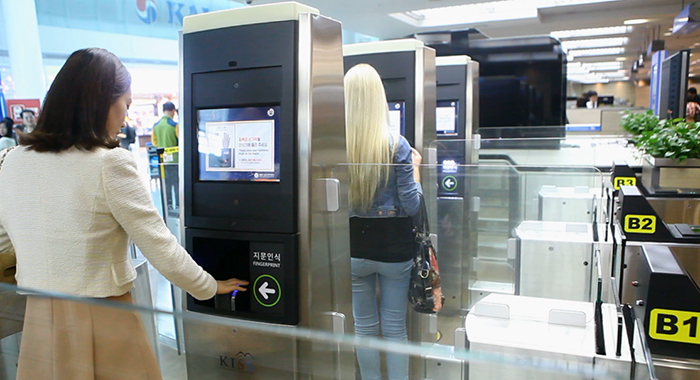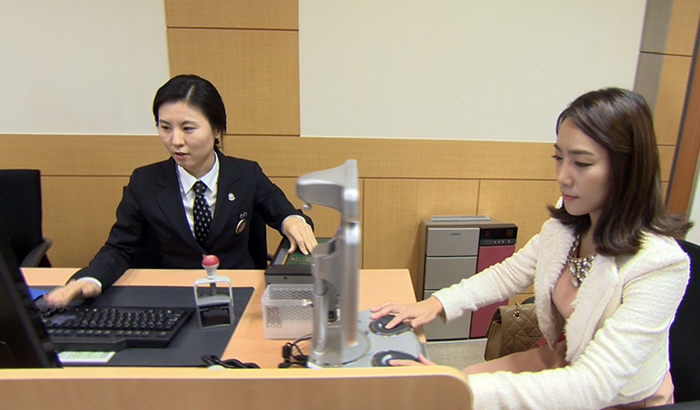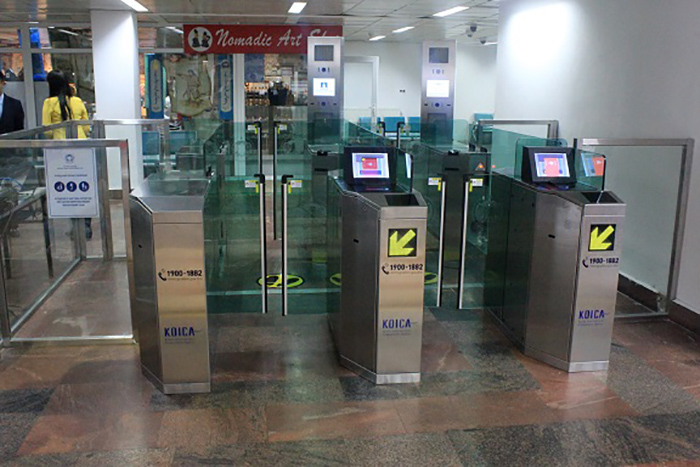| The Korean government has been concentrating on establishing e-government services since 1987 when it enacted laws expanding the supply of desktops and promoting the use of computer networks in order to provide high-quality government services to its citizens in a more convenient manner. Thanks to such ongoing efforts to develop related technologies, Korea’s e-government systems are now receiving praise from all around the world. We would like to trace this journey, from its initial footsteps through to some of today's successful cases, and look at future directions in which Korea's online government services and international cooperation could go. This is the third part of a series about the Korean government sharing its e-government systems with the world -- Korea’s immigration screening system. |
The number of people who use Incheon International Airport as their gateway to Korea is on the rise. During the Chuseok mid-autumn harvest festival from Sept. 13 to 18 this year, the number of users at the airport was estimated at around 970,000, 19.6 percent up from the same period last year. That's the highest number of users during the holiday period ever seen at the airport. On July 31, this year, the number of travelers per day using the airport surpassed 200,000 for the first time.
Considering the growing number of travelers, tourists and businesspeople coming in and out of Incheon, you'd think that the number of immigration officers would have to have increased. However, it has stayed the same. It has remained more or less constant, and it doesn't seem to have caused any serious inconveniences. It doesn't take any longer now to go through immigration. This is thanks to Korea’s automated immigration screening system, dubbed the "Smart Entry Service" (SES).

Tourists finish the immigration process by scanning their fingerprints and faces, using the smart entry service kiosks and making use of the personal information provided to the SES registration center.
Thanks to the SES, it takes less than one minute to complete the immigration screening process, in most cases. If you register your passport information and biological information, such as fingerprints and facial information, beforehand with the SES registration center, you can pass through immigration when you arrive in or depart Korea using solely your face and your fingerprints.
Since its introduction in 2008, the system has been used by a growing number of people. According to the Ministry of Justice, the number of SES users is on the increase. In 2015, the number of SES users was 13,132,445, 19.8 percent of the total number of people who came or went from Korea, which was 66,272,908 for that time period.
The SES can be used by all South Korean citizens who are aged 7 or above, or non-Korean citizens who are aged 17 or above and have a currently valid non-citizen registration card from the Korean government. Those who hold an electronic passport from the U.S. or Hong Kong can also use the system and the SES screening gate.
In 2012, Korea and the U.S. agreed to use the automated immigration system for citizens of each other’s countries. Korea has also made such agreements with Hong Kong in 2013. Macao citizens will be also able to use the system from November 2016.

To use the SES, travelers need to register their passport and biological information beforehand, including fingerprints and facial information.
Currently, you can find SES registration centers at 11 locations across Korea. They are at international airports in Incheon, Gimpo, Gimhae, Daegu and Jeju Island, and also at Seoul Station, at the City Airport in Gangnam-gu District in southern Seoul, and at immigration centers in Daejeon, Cheongju and Gwangju.
In order to extend SES services and to reduce inconveniences at the airport, Korea will abolish the existing advance registration system starting in 2017. The justice ministry announced in June this year that it has established a new system with the Korean National Police Agency in order to use the SES system without having to register in advance.

New turnstiles and kiosks that use a Korean smart entry immigration screening service are installed at Chinggis Khaan International Airport in Ulaanbaatar.
This system has been gaining quite a lot of attention overseas, and this has, in turn, led to more exports. The system won the U.N. Public Service Award 2007 and was introduced at Chinggis Khaan International Airport in Ulaanbaatar in 2014. The Mongolian government asked for the Korean government’s support in order to modernize its overall immigration processing system and the non-citizen registration system used at all immigration offices across the country.
Since 2015, Korea and the Dominican Republic have also been working together to modernize the Caribbean country's immigration management system, as part of an Economic Development Cooperation Fund (EDCF) program.
Finally, the justice ministry has been working with governments in Paraguay, Chile and Peru to establish smart immigration systems in those countries, too.
By Yoon Sojung
Korea.net Staff Writer
Photos: Ministry of Justice, KOICA
arete@korea.kr